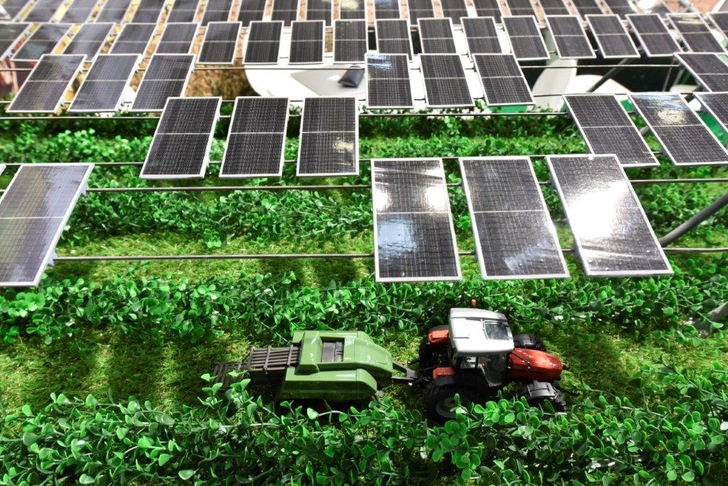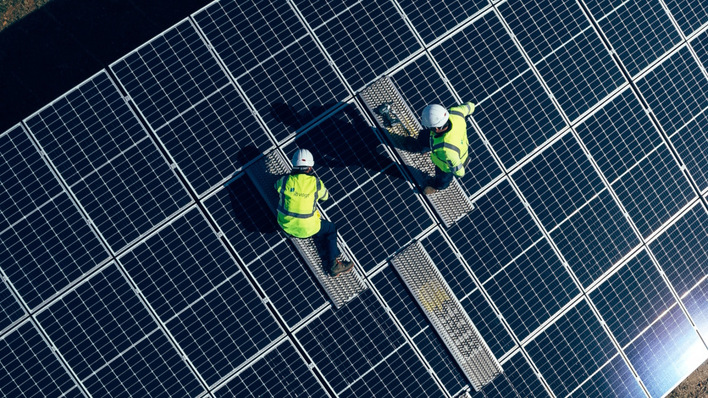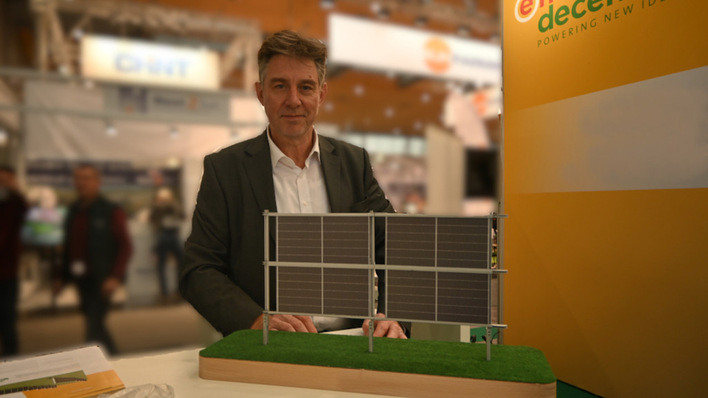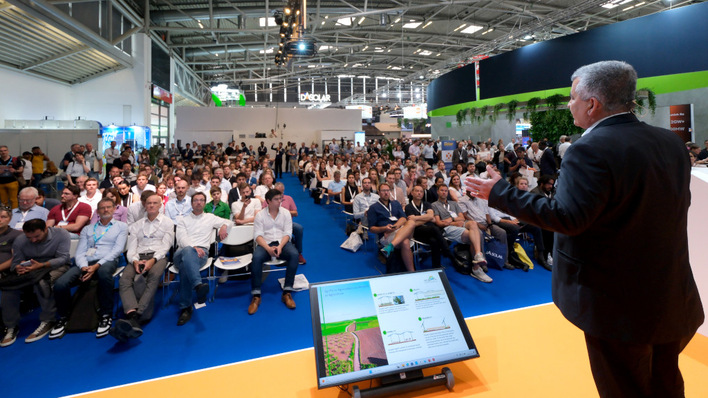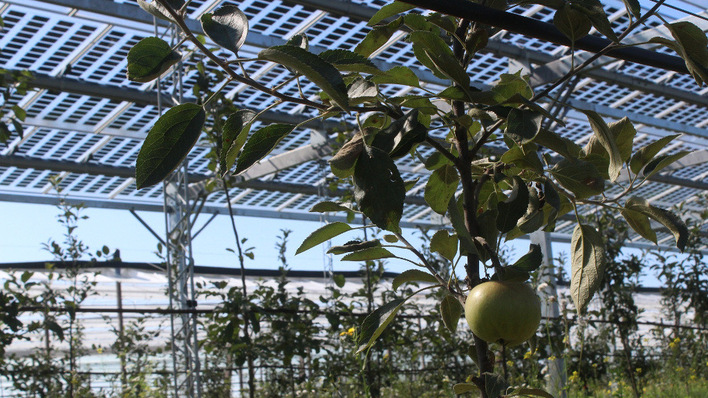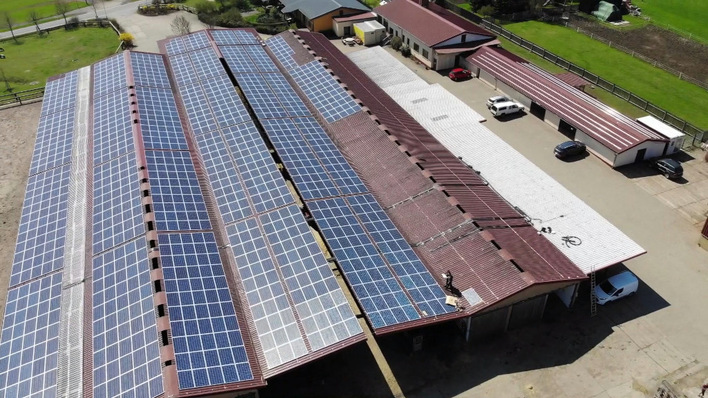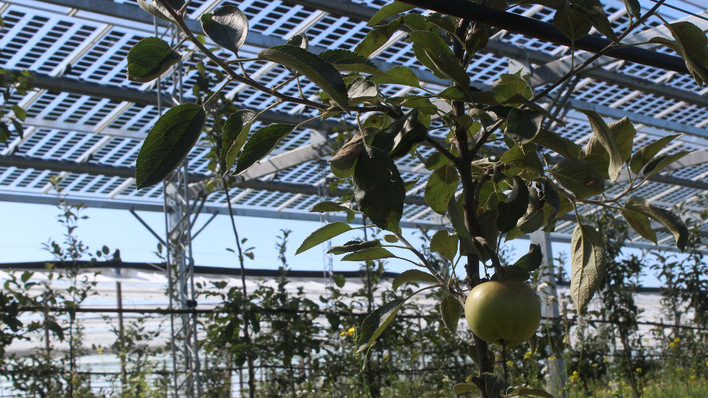The idea behind agrivoltaics is ever evolving and generating increasing amounts of interest. Long gone are the days when agricultural PV was considered a niche solution. According to Fraunhofer ISE, more than 14 gigawatts of capacity were installed globally back in 2020, with China leading the way. But agricultural PV is gaining traction in Europe too. Germany has put out innovation tenders to promote this technology, Italy is planning a major funding package and France has founded the world’s first association dedicated to the promotion of agricultural PV. Progress is also being made towards greater standardization, which is vital for improved market ramp-up. Further experience in this area, innovative projects and agricultural PV technology are all set to be presented at Intersolar Europe, taking place from May 11–13, 2022, as part of The smarter E Europe at Messe München. Players in the industry will also have the opportunity to exchange ideas on the broad range of agrivoltaics services at the Intersolar Europe Conference on May 10, one day before the start of the exhibition.
One of the key advantages of agrivoltaics is that it prevents land usage conflicts with agriculture by increasing solar power production using ground mounted PV systems. This can be seen in many European countries. Italy has already pledged EUR 1.1 billion to promote agrivoltaics, including installing 2 GW of agricultural PV capacity. France, meanwhile, has been promoting agricultural PV since 2017 through a series of innovation tenders, launching 48 projects in 2020 alone. According to Christian Dupraz, a senior researcher at the French National Research Institute For Agriculture, Food and Environment (INRAE), most of these projects include tracking systems, which are the big trend in France.
Innovation tenders and new standards usher in a wave of development
In April 2021, industry representatives from agriculture, the PV sector, and research and certification bodies agreed on DIN SPEC 91434, which will serve as the basis for developing a full DIN standard. The specification covers the key aspects of agricultural PV, including scope of application, terminology, criteria and requirements for the technology, planning, installation, operation and maintenance. In October 2021, the German Federal Network Agency (BNetzA) used this specification to define the agricultural PV requirements for its innovation tenders – scheduled for spring 2022 – which aim to generate 150 megawatts (MW) of capacity in line with Germany’s amended Renewable Energy Act. In its coalition agreement, Germany’s new federal government announced that it plans to promote greater use of agrivoltaics as part of its 200 GW solar target. hence the original tender plans for 50 MW have been increased to 150 MW. The definition of suitable land has also been expanded to include perennial and permanent crops, including fruit production. Read the Trend Paper For Intersolar Europe: Agricultural PV to find out more about the developments sweeping through Europe.
See also: Solarzaun implements first project in Switzerland
Agricultural PV has even greater potential in regions with a desert climate or pronounced periods of drought, where water conservation plays a vital role in agriculture. International research projects such as Watermed 4.0 and APV-MaGa – Agriphotovoltaics for Mali and Gambia are investigating and implementing solutions aimed at using the land in three different ways – from food production and solar power generation to rain water collection and storage using the solar modules.
Enormous potential for orchards, berry farms and vineyards
In the village of Babberich in the Netherlands, raspberries are being grown on a 3.3 hectare farm under a 2.67 MW agri-PV-installation – and successfully so. This method has increased the net yield at harvest by around six percent compared with conventional raspberry-growing techniques that use polytunnels. Max Tegtmeyer from BayWa r.e. reports on this experience in a webinar on agricultural PV held by the International Solar Energy Society (ISES) and the Global Solar Council (GSC), which have been partners of Intersolar Europe for many years. The project was even awarded The smarter E AWARD in the Outstanding Solar Projects category in 2021. Moreover, in September last year, a 258-kilowatt test plant was installed at an apple orchard in the German district of Rhineland-Palatinate in order to demonstrate the potential of agricultural PV and optimize its use in the fruit farming industry. Another five agricultural PV demonstration plants, with a total capacity of at least 1,650 kW, are also planned for fruit and berry farms in Baden-Württemberg, Germany. The plans were announced by the Baden-Württemberg Ministry of the Environment in mid-January 2022, along with a EUR 2.5 million funding package for the projects.
Intersolar Europe Conference will focus on agricultural PV
The Intersolar Europe Conference, taking place on May 10, 2022, promises to be another highlight. In addition to sessions on floating solar and BIPV applications, the conference will host two events dedicated to the topic of agricultural PV. Alongside realistic ways of tapping into the potential of agricultural PV, the session How to Benefit most from Solar & Farming will present current market developments as well as a product overview and innovative solutions. This will be immediately followed by a session entitled Understanding the Versatility of Combining Solar Power with the Agribusiness. The speakers will present a range of agricultural PV applications and discuss the benefits for farmers and developments in the farming industry. Lastly, the conference will provide insights into how solar energy and urban farming work together. (mfo)
Also have a look at our new special issues on PV for farmers published together with DLG


